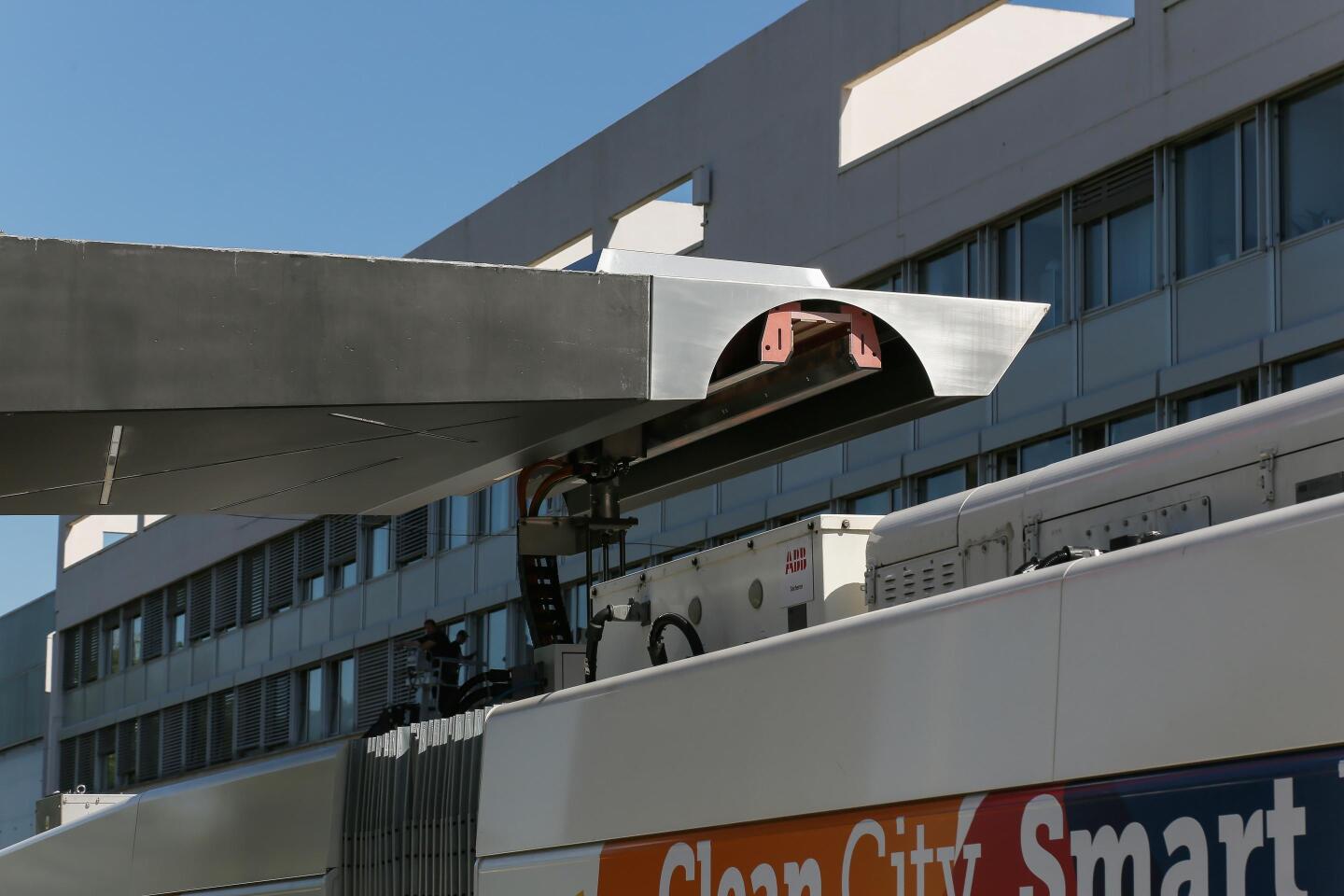It’s one thing to invent an electric bus, a hydrogen car, or other green transportation technology, but quite another for it to work in the real world. For example, the Trolleybus Optimisation Système Alimentation (TOSA) flash-charging electric bus system may be the most brilliant idea ever, but if it can’t stay in the black, then might as well be drawn by diesel-powered horses. Scientists at the École Polytechnique Fédérale de Lausanne (EPFL) are hoping to avoid that scenario by developing a computer model that helps engineers integrate the buses into existing transport systems while keeping costs down.
Scheduled to roll out on the streets of Geneva in 2017, the TOSA bus system is different from the electric buses and trams that have been a common sight in larger cities for over a century. Instead of relying on expensive and unsightly overhead power lines, the 133-passenger TOSA buses draw power from a bank of electric batteries light enough to ride on the roof.
That doesn’t seem anywhere near large enough to move such a behemoth very far, but the TOSA system gets around this large-scale range anxiety by means of a robotic arm mounted on the roof. When the bus comes to a bus stop to discharge and take on passengers, a laser guides the arm to a charging receptacle and in 15 seconds the bus receives a 400-kW charge to get it to its next destination.

It’s a clever system and it certainly does away with the expense of installing and maintaining all those overhead wires, but unless the TOSA buses are going to be used in a development designed especially around them, they’ll have a hard time fitting in.
Using a pilot version of the system running from Geneva airport to the Palexpo exhibition center, EPFL and its partners ABB Sécheron and the Haute Ecole ARC developed a web-interfaced computer model that takes into account 56 factors, such as drivers' wages, the cost of equipment such as batteries, life expectancy of components, cost of electricity, number of passengers, the weather, and others.
Using this algorithm, EPFL calculates the number of charging stops, the distance between them, the bus schedule, and other variables that it incorporates into a virtual bus line that planners can use to produce the most cost-effective plan. According to EPFL, the model will not only help in developing the first TOSA bus line in Geneva, but also in planning more complex extensions without losing efficiency.
The video below outlines the TOSA bus model project.
Source: EPFL







